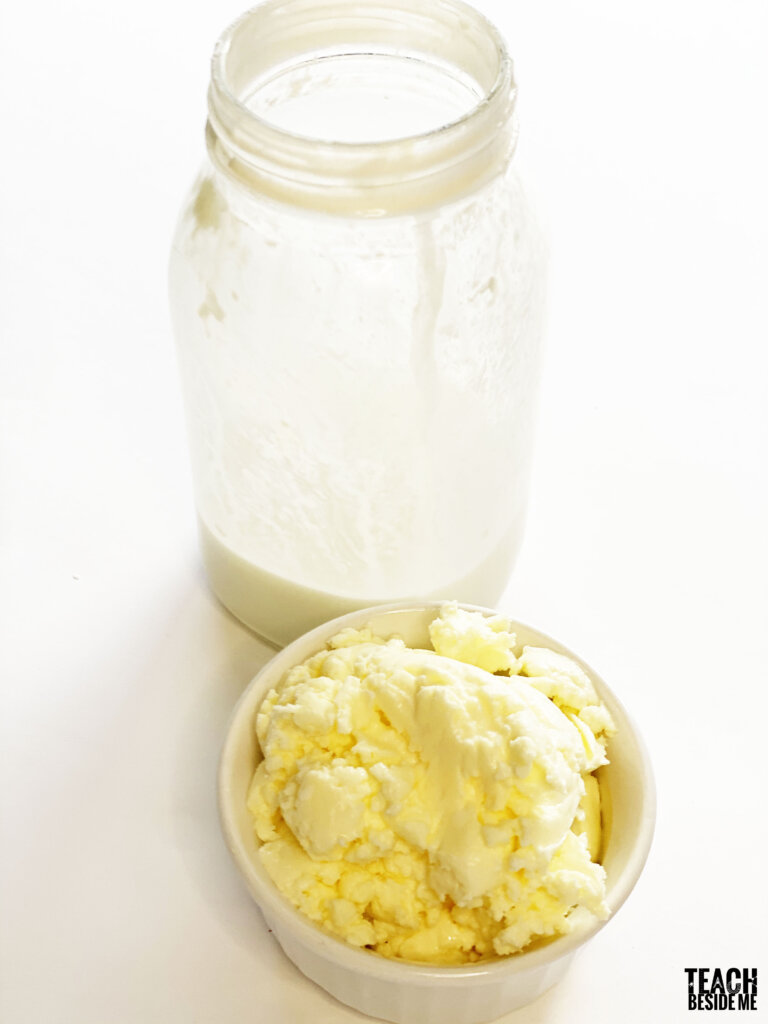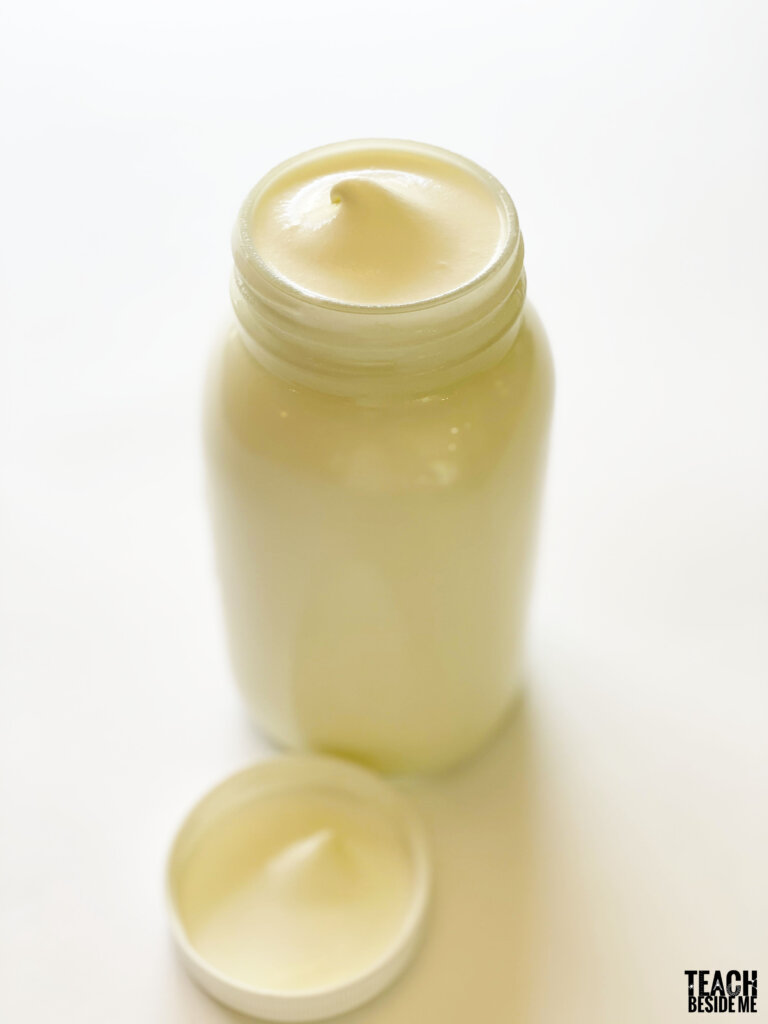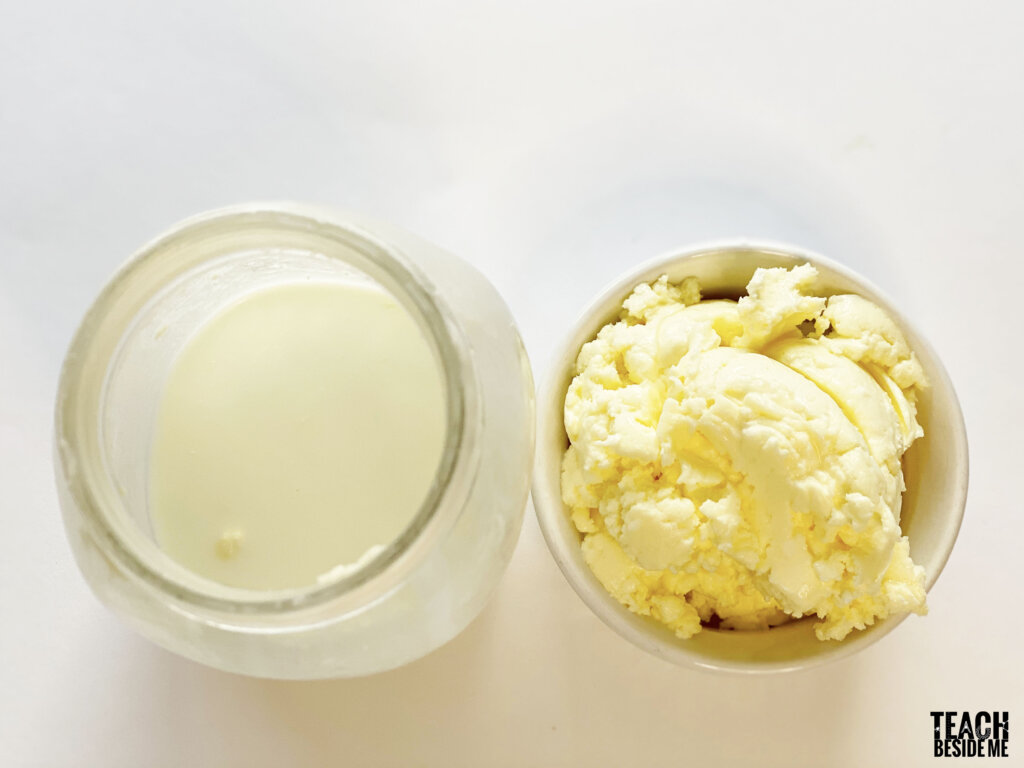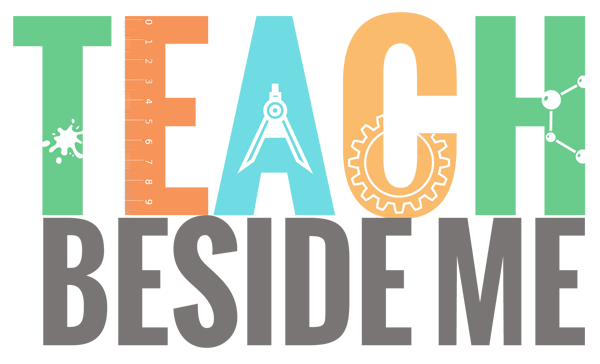Kitchen Science: Homemade Butter in a Jar
This post may contain affiliate links.
One of my favorite kinds of lessons are the ones that involve food. We are big foodies around here. Food makes learning so much more fun. This classic science experiment is such a fun one for kids~ Homemade Butter in a Jar.

Have you tried this kitchen science experiment before? If not it’s a must-do at some point! I’ve done it on many different occasions in classroom and home settings with my kids and other students I have taught over the years.
When I taught Foods classes, we always did this experiment. I have also done it in a large church class with a whole bunch of kids passing it around the room. There are so many ways to make it fun!
Watch it in action here:
How to Make Homemade Butter in a Jar
This is such an awesome kitchen science experiment. But also, this activity is perfect to use in a Farm Unit! With out Community Helpers focus this week, this is my science activity for that theme.
Fresh butter is so easy to make, and it is delicious! Homemade butter (like everything) is so much better than the store bought kind.
It used to be done in a butter churn, back in the day. I can imagine those who churning butter must have some great arm muscles! We have an antique butter churn in out house that was from on of my husband’s ancestors. I love showing it to my kids and helping them understand how butter is made.
Homemade Butter Recipe:

You need cream and salt and a jar. That’s it! The proportions will vary depending on the size of your jar.
Just fill your jar up halfway with some heavy cream. I also like to put a pinch of salt into the cream so the butter has a nice salty flavor.

Any size of jar will do. If you want a small amount, use a little jam or baby food jar. We used a quart size jar for ours.
Screw your lid on tight – you don’t want to use a canning lid as the liquid will escape. Make sure you have a solid lid.

Start shaking or rolling the jar. It will take some time and your hands and arms will tire of shaking unless you have a few helpers. My kids sat and rolled it to each other for a while and took turns shaking it.

About half way through the shaking process, you feel it get a lot thicker. When we opened it, It was about the consistency of whipping cream.

Then, as you continue to shake, you will feel the consistency change again. This is when the butter and the buttermilk separate. You will also see it has turned yellow!

After about 30 minutes of shaking, ours was done.
This can easily be done with a hand mixer, a stand mixer, or even a food processor. If you want it done more quickly, this is the way to go. We were going for the experience, though.

The liquid left behind in the jar is called buttermilk. There will always be some left. We had about a cup of buttermilk left over in our jar.
Have you ever bought buttermilk in the store? This is what it is! Don’t throw it out! Make some biscuits or pancakes with it.
The Science Behind It~ How Does Homemade Butter In a Jar Work?
This process is called a physical change, just like water turning to ice when it is frozen. (See my post on states of matter.) It can be changed back to the original form. If the butter you created were melted and mixed back into the buttermilk, you would have your heavy cream again.
Heavy cream is the fat from milk. When the fat is shake, those fat molecules get displaced and separated from the liquid and they stick together. Just like oil and water separate, fat and water are not friends.
Why Does Butter Turn Yellow?
Butter turns yellow as you make it. It’s strange to see the color change as it thickens and separates. It turns yellow because of the high fat content.

Cows eat foods with beta carotene which has a yellow pigment. The beta carotene is stored in fat. If you have ever heard of fat soluble vitamins, beta carotene is fat soluble which means in our bodies it is stored in the liver and fat tissues to be used s needed.
When the liquid or buttermilk is separated out, what remains in the butter is all of that fat and the beta carotene vitamin. ISn’t that fascinating?

See More of My Kitchen Science Experiments:
Kitchen Chemistry: Cake Experiment
Space Food: How to Make Astronaut Ice Cream
Five Senses Activities for Kids
Green Eggs Chemistry Experiment
Food Chemistry: Turn Juice into Noodles!






